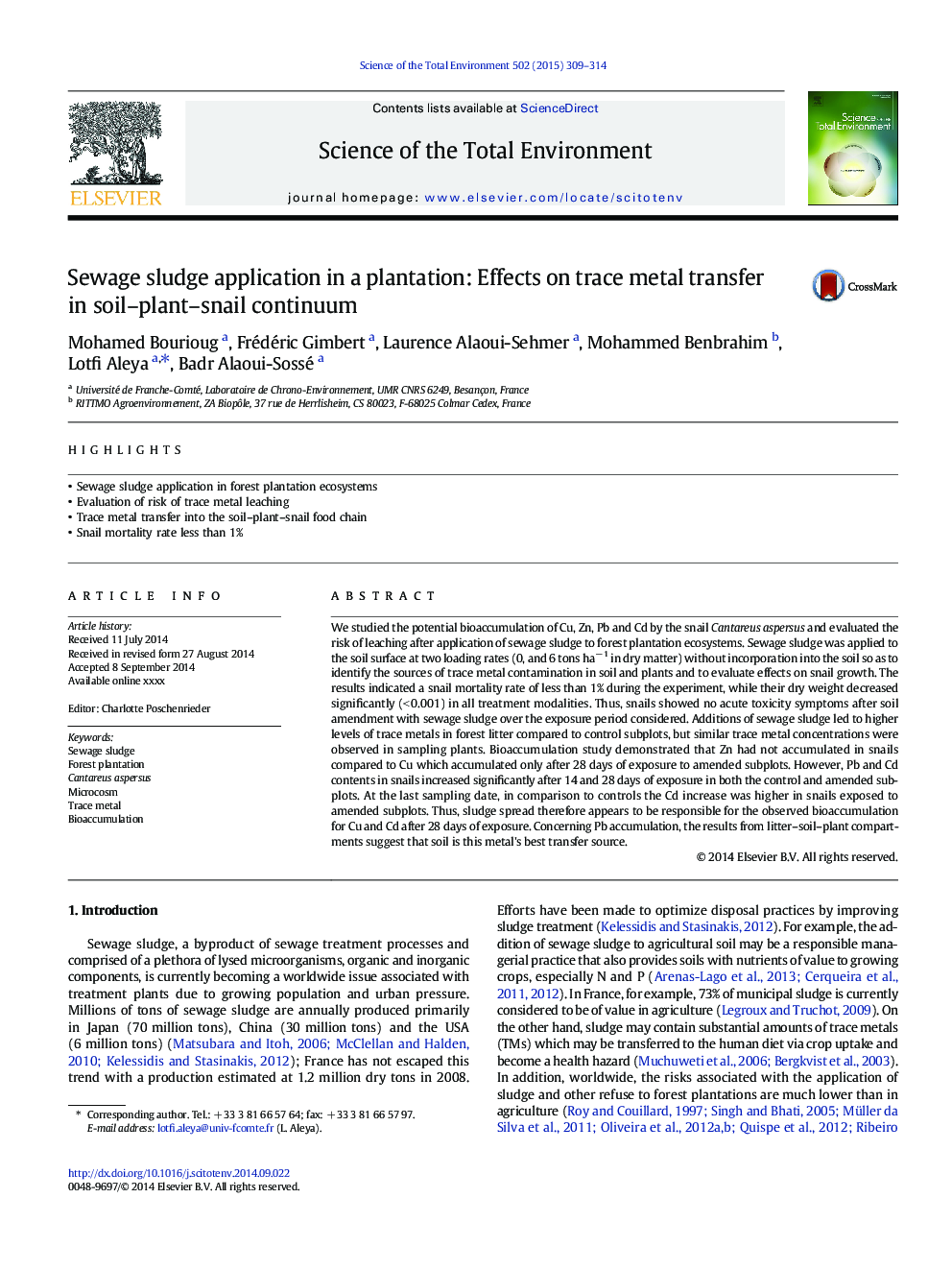| Article ID | Journal | Published Year | Pages | File Type |
|---|---|---|---|---|
| 6328466 | Science of The Total Environment | 2015 | 6 Pages |
Abstract
We studied the potential bioaccumulation of Cu, Zn, Pb and Cd by the snail Cantareus aspersus and evaluated the risk of leaching after application of sewage sludge to forest plantation ecosystems. Sewage sludge was applied to the soil surface at two loading rates (0, and 6 tons haâ 1 in dry matter) without incorporation into the soil so as to identify the sources of trace metal contamination in soil and plants and to evaluate effects on snail growth. The results indicated a snail mortality rate of less than 1% during the experiment, while their dry weight decreased significantly (< 0.001) in all treatment modalities. Thus, snails showed no acute toxicity symptoms after soil amendment with sewage sludge over the exposure period considered. Additions of sewage sludge led to higher levels of trace metals in forest litter compared to control subplots, but similar trace metal concentrations were observed in sampling plants. Bioaccumulation study demonstrated that Zn had not accumulated in snails compared to Cu which accumulated only after 28 days of exposure to amended subplots. However, Pb and Cd contents in snails increased significantly after 14 and 28 days of exposure in both the control and amended subplots. At the last sampling date, in comparison to controls the Cd increase was higher in snails exposed to amended subplots. Thus, sludge spread therefore appears to be responsible for the observed bioaccumulation for Cu and Cd after 28 days of exposure. Concerning Pb accumulation, the results from litter-soil-plant compartments suggest that soil is this metal's best transfer source.
Related Topics
Life Sciences
Environmental Science
Environmental Chemistry
Authors
Mohamed Bourioug, Frédéric Gimbert, Laurence Alaoui-Sehmer, Mohammed Benbrahim, Lotfi Aleya, Badr Alaoui-Sossé,
